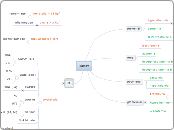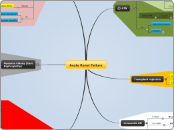Glomerular Dz
Nephrotic
Nephrotic syndrome
Proteinuria: > 3 g / 24 hrsHypoalbuminemiaHypercholesterolemiaEdemaNephrOtic = PrOtein
FSGS
Reflux Neph: Unilateral renal agenesis
Obesity
Heroin
HIV
Rapid progression to ESRD w/in months
Collapsing features
Compression of glomerular tuftHyperplasia of VECsMembranous (Other)
LN,membranous
(Neg) Congo Red
Fibrillary GN
Fibrils larger than amyloid
(Pos) Congo Red, Crystal Violet, Thioflavin T
Amyloidosis
Causes:
TBOsteomyelitisBronchiectasisLeprosyUlcerative colitisRheumatoid arthritisEosinophilic, Glossy material
Microscopic
Homogenous, pink
Gross
Dark brown w/ Iodine
Renal transplant, Neg. for Immune complex Dz
Transplant GN
Most common cause of immune complex GN = Membranous GN
Must use IF and EM to rule out Membranous GN.
Subendothelial electron-lucent widening
White adult, Poor response to steroids
Membranous GN
White
Males > Females
RARE in children
ALL glomeruli involved
Compare microscopic findings to Acute-PIGN.
Stages (I-IV) determined by EM
If immune complex deposition is stopped at early stages, changes are reversible.
Immune: LupusSTD: SyphilisInfectious: Malaria, Viral hepatitis (Australia Ag)Iatrogenic: Gold therapy (for RA)CancerNumerous, small subepithelial deposits
Finely Granular
Opposed to Coarse granular (lumpy-bumpy) in PIGN
Diffuse, thickened BM
Black, ↓GFR, HTN, Poor response to steroids
Idiopathic FSGS
Prognosis: ESRD in 5-20 yrs
Epithelial cell detachment from BM
Focal damage of VECs
Visceral epithelial cells (Rapid Review)
Foam cells
Hyaline
Variant FSGS
Collapse of glomerular capillary loops
Obliterated capillary lumen
Segmental, Focal lesions
Juxtamedullary glomeruli
1-3 yo, T-cell cytokines affect BM charge, steroids
Min. Change Dz
Rx: Steroid therapy
Good prognosis (despite massive proteinuria)
Effacement of epithelial foot processes
May see mild increase in mesangial matrix
Nephritic
Think inflammation
NephrItic = Inflammation
anti-BM
GN+Lung, Type II Hypersens.
Male, Hemoptysis, Dyspnea, Discolored urine
Goodpasture's
5:1 M/F ratio
Pt develops renal failure typically?
GN, no lung
Vasculitis
HBsAg
Classic PAN
Renal infarct
P-ANCA
Hypersensitivity angiitis (microPAN)
Crescents possible
Focal necrotizing GN
Fibrinoid necrosis
Crescents
C-ANCA
Wegener's Granulomatosis
Lung Granuloma
Child: GI, Joint, Skin
Henoch-Schonlein purpura
Syndrome:
Abdominal Pain
Arthralgia
Purpura
Malar rash, Anti-Sm Ab
Few glomeruli, segment of glom. tuft
LN, focal prolif.
Females, 20s-40s
All Glomeruli involved
LN, diffuse prolif.
Most serious
Most common
Can also present w/
VasculitisInterstitial nephritisFemale, 20s-40s
Subendothelial, Mesangial Deposits
"Full House"
"Full House" = Positive for the entire panel
IgGIgAIgMC3Hyaline thrombi
Wire Loop
Normal OR
Hypocomplementemia
Both types are RESISTANT to STEROID THERAPY
Mesangial proliferation which advanced to the Basement membrane (HENCE MEMBRANOPROLIFERATIVE)
Alt. path of Complement
Low C3
Normal C4
MPGN-2 (DDD)
Entire BM is darkened
C3 Nephritic Factor
Mentioned in Intro. lecture as well
Immune Complex
Low C3
Low C4
MPGN-1
Subendothelial deposits
Split BM
IgG, C3
Duplicated BM
"Lumpy-bumpy", GAS
PIGN
Group A Strep (12, 4, 1, 49)
PharyngitisTonsillitisOtitis mediaMastoiditisPeritonsillar abscessSkin infectionLatent period of 1-4 weeks
young>adult
male>female
Crescents possible
2 or 3 Large Humps
Coarsely granular = "lumpy bumpy"
Compare to membranous GN
Crescents may be seen
PMNs
Diffuse proliferative
Mild clinical abnormalities
Secondary
Benign HTN
Mild Diabetes
LN, mesangioprolif.
5 yr survival: 100%
Dense deposit in mesangium
IgG, Complement, IgA in Mesangium
Proliferation of mesangial cells, matrix
Primary
IgA Nephropathy
aka Berger's dzEpisodic bouts of hematuriaCommon: young, malebut can affect anyone at any ageProgression to CHRONIC RENAL FAILURE IN 50% of casesNot to be confused with Buerger's dz (thromboangiitis obliterans)
IgA Mesangial deposits
Before Dx, rule out the following
LupusHenoch-Schonlein PurpuraMay see IgG and C3 also.
Mesangioprolif
Normal or...
Thin Membrane Dz
AKA Benign familial hematuria
AKA Benign idiopathic hematuria
Be cautious when making diagnosis.
There is no universally-accepted standard for normal GBM thickness
BM Thinning
XLR, Hearing, Ocular, a5 of Type IV collagen
Alport's
Rx: Renal transplant
EM
Multi-layer laminated
"basket-weave" appearance
IF
LM
↑ed mesangial matrix









